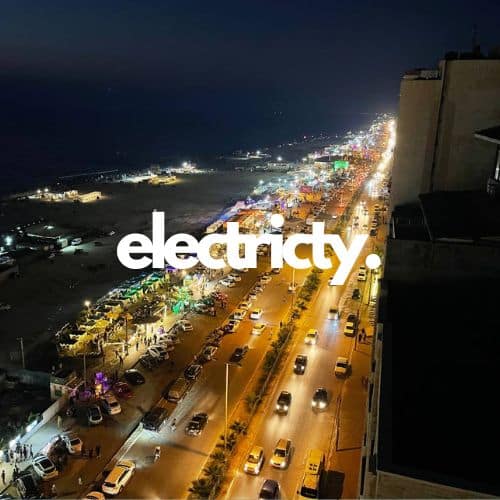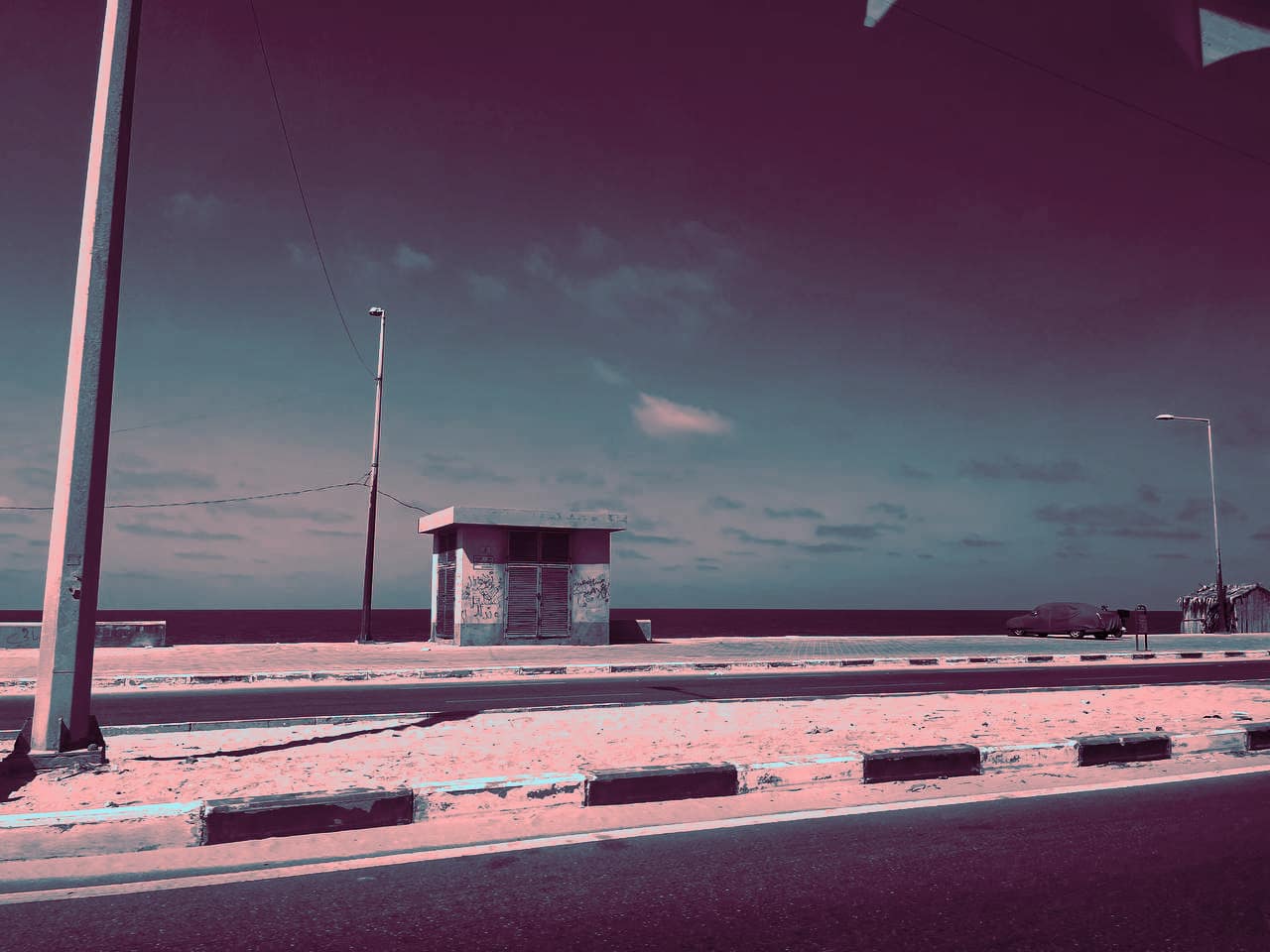“Oh, electricity, you forgot us! You haven’t visited us in so long!”
Lyrics from a funny Arabic song about the power cuts from the 2010s.
In Gaza, electricity is a constant source of stress and worry. With regular power cuts that occur on semi-schedule, Gazans learn to memorize when electricity will come and go and plan their lives around the availability of power. While it is near impossible for anyone who has not experienced something similar to imagine what this is like for Gaza’s, this page details some of the realities of what it’s like for 2.3 million Gazans to live with inconsistent, unreliable, and insufficient power.

Electricity used to grace Gazans with its presence for about eight hours per day.1 Some households and businesses in Gaza rely on generators to give them power during the lengthy cuts. For those unable to afford expensive generators, battery-powered LED lights serve as lifelines. While their light is weak and flickers endlessly, many appreciate the light they give as the source is safer than candles. Furthermore, Gazans are not only resilient to traumatic experiences but also adaptable and have learned how to succeed at their jobs and chores with the tiny LED lights.
On “normal” days, electricity ran on a schedule, albeit an inconsistent and irregular one that was susceptible to random changes, cuts, and even arrivals. Power sometimes arrived hours later than expected, but, on rare lucky days, it came early. Still, the schedule typically followed a pattern that Gazans would memorize. An example schedule would be as follows: electricity from 6 AM to 2 PM, no electricity until 10 PM, followed by electricity from 10 PM to 6 AM.2 The cycle would repeat and change with the seasons; routines and plans were always planned around the unreliable and fickle electricity.
Depending on economic status, access to electricity varied. The affluent could afford solar panels and UPS backup generators, ensuring a semblance of normalcy with lights, fans, internet, and even powered fridges. However, this luxury was rare. Most people relied on generators or solar panels to charge phones and maintain internet connectivity during the 8–hour blackouts. Life without electricity means every Gazan child knows the importance of being quick when opening the fridge as they were strictly instructed to not linger or open them unnecessarily to prevent food from spoiling. Yet, in the sweltering summers, it wasn’t uncommon to see little kids sticking their heads in the freezer for reprieve.
For cooking, most Gazans relied on propane tanks. However, some had electric ovens which offered them the ability to choose precise temperatures. Seemingly a luxury, this meant it was necessary for some (yes, even the more privileged) households to carefully plan around power availability. Knowing when the 8–hour window would arrive was crucial. Gazans always kept track of this and planned their days around it. They had to. At least if they wanted to cook, shower, iron, even exercise and work.
Late arrivals of electricity or insufficiently fueled generators could disrupt lives, sometimes leading to days without power. Community support is vital to life in Gaza, with people relying on family and even friends to allow them to store food in their fridges or freezers, iron something quickly by allowing them to plug into their generator, or even use their internet to be able to take exams or participate in important meetings. The lack of electricity, and its unreliability in particular, made online education during COVID especially difficult.
In Gaza, hospitals and some businesses had continuous power supplied by generators. Schools, however, did not. This meant students were left to shiver from the cold in the winter month and suffer from heat exhaustion in the sweltering summer ones.
The US–based Centre for Strategic and International Studies (CSIS) said in a report that the Gaza Strip had an estimated 12,400 rooftop solar systems, with one area of 655 panels in a square mile likely representing the highest density of rooftop solar panels in the world.3 20% of households in Gaza relied on solar energy.4
With more than 2.3 million people squeezed into this narrow strip of land, the demand for power in the Gaza Strip far exceeds supply. While Gaza receives some electricity from Israel and operates a lone power plant which was crippled by bombings in 2006, it still faces chronic shortages, highlighting the struggle of basic necessities.5
References
- Electricity in the Gaza Strip. United Nations Office for the Coordination of Humanitarian Affairs – occupied Palestinian territory. (n.d.). https://www.ochaopt.org/page/gaza-strip-electricity-supply ↩︎
- Electricity in the Gaza Strip. United Nations Office for the Coordination of Humanitarian Affairs – occupied Palestinian territory. (n.d.). https://www.ochaopt.org/page/gaza-strip-electricity-supply ↩︎
- Todman, W., Jr., J. S. B., & Jun, J. (n.d.). Gaza’s solar power in wartime. CSIS. https://www.csis.org/analysis/gazas-solar-power-wartime ↩︎
- El-Khozondar, H. J., & El-batta, F. (2022, April 28). Solar energy implementation at the household level: Gaza strip case study – energy, sustainability and Society. BioMed Central. https://energsustainsoc.biomedcentral.com/articles/10.1186/s13705-022-00343-7 ↩︎
- Yasser Fathi Nassar, Juaidi, A., Ismail, M., Droege, P., Abu-Hafeetha, M. F., Naim, A. N., Aydi, J. Y., Hamed, T. A., & Elnaggar, M. (2018, December 29). Assessment of solar energy potential in Gaza Strip-palestine. Sustainable Energy Technologies and Assessments. https://www.sciencedirect.com/science/article/abs/pii/S221313881830331X?via%3Dihub ↩︎
